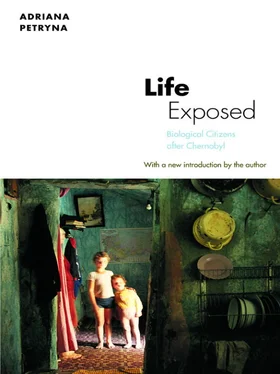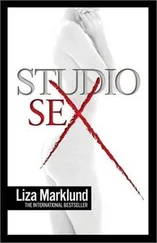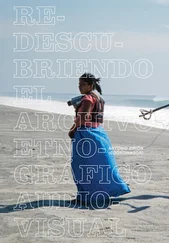This directive concerns diagnosing early symptoms of exposed persons who are in clinics and who do not show signs of ARS. Indicate the diagnosis of “vegetovascular dystonia” in the patient’s medical record. Also indicate “vegetovascular dystonia” in the medical records of workers who are entering clinics for monitoring and who have received the maximum allowable dose . (Emphasis added) [19] “About the Diagnostics of the Illnesses of Individuals Who Were Exposed to Ionizing Radiation,” May 21, 1986 ( Chornobyl’: Problemy Zdorov’ia Naselennia 1995:144).
Six months after the Soviet Health Ministry issued this decree, the Ukrainian health minister confidently reported that his medical cadres had successfully fulfilled the command to enter the VvD diagnosis in the medical records of the exposed. He also stated, “In the period following the disaster, 17,500 people have been hospitalized with various illnesses . Following the directive of the Soviet Ministry of Health, all persons from the Zone who are being hospitalized and who lack signs of immediate acute injuries have received the diagnosis of vegetovascular dystonia [emphasis added].” [20] The Ukrainian health minister’s informational bulletin made one request: “Until now, the Soviet Ministry of Health has not provided us with a list of diagnoses associated with the activity of ionizing radiation.” “Information from the Ukrainian Ministry of Health to the Central Committee of the Ukrainian Communist Party about Difficulties in Designating Work Capacity of Workers in the Zone,” December 29, 1986 ( Chornobyl’: Problemy Zdorov’ia Naselennia 1995:67).
This official intervention reinforced a dynamic we have already seen at work with respect to Soviet radiological monitoring. Nonknowledge became crucial to the deployment of authoritative bioscientific knowledge. Technical laxity fit well with this process, as well as with the way the Soviet administrators attempted to adapt a general population to the postaccident situation (this process will be assessed in terms of its impact on individual lives in chapter 5). [21] Blood indicators went largely unmonitored. Radiation’s effects, at least those traceable in the blood, were disappearing (largely as a function of natural physiological processes). Blood lymphocytes repopulate at high rates so that the very chromosomal damage containing original evidence of exposure had been lost over time. Their biological effects were being eliminated as nonevents.
A Union-wide clinic and research center was established in Kyiv in 1986 to monitor 600,000 children and adults. Romanenko became its acting director and held this position until 2000.
• • •
I turn now to the initial focus of Soviet bioscientific concerns and interventions and their political outcomes. Within two weeks of the disaster’s onset, unprecedented Soviet-American bioscientific cooperation began. This endeavor, an example of high-profile “techno-diplomacy” at the end of the Cold War (Schweitzer 1989), became focused on a limited group of 237 acute accident victims. Their extreme injuries became the measure by which the scope of populationwide injury was defined, justifying immediate remedial actions. International experts used the accident context as a scientific “ready-made,” evaluating preparedness for future accidents and accelerating bioscientific research.
This techno-diplomacy was initiated by Dr. Robert Gale, under the auspices of Armand Hammer. Gale was a leukemia specialist at the School of Medicine of the University of California at Los Angeles, who offered to conduct bone marrow transplants on workers who were irradiated in lethal doses and to treat less severe cases experimentally. [22] The five-member team arrived on May 6, 1986. Dr. Gale headed the International Bone Marrow Transplant Registry and was admitted under the aegis of the industrialist and philanthropist Armand Hammer.
Significantly, Gale’s five-member team had little background in radiation medicine, radiobiology, or accident management. Richard Champlin was a bone marrow transplant specialist and a specialist in the treatment of leukemia. Paul Terasaki was a kidney transplant specialist involved in researching problems of donor-recipient matching. M. Ray Mickey was a leukemia specialist involved in problems of genetic (HLA) matching. Yair Reisner was a bone marrow transplant specialist researching hematopoietic reconstitution using stem cells and developing methods of obtaining high yields of bone marrow cells from murine models. All were part of a growing international network of transplant specialists, and some were affiliated with the International Bone Marrow Transplant Registry. Angelina Guskova’s team consisted of twelve members, medical workers, leukemia and radiological specialists of Clinic No. 6.
Gale considered his cooperative biotechnological gesture a breakthrough in Soviet-American political relations. He felt that both parties stood to benefit: “I had a series of clicks in my mind, which was that, you know, this is exactly what we do every day. These guys don’t have the resources to deal with it, and we do.” He used the media attention on the Chernobyl affair to get the Soviets to agree to let his team in. “No one was going to believe what Gorbachev had to say about Chernobyl. I convinced them of that [in my negotiations]…. They had no credibility.” Gorbachev personally invited the American specialists to conduct experimental bone marrow transplants, hoping to improve the image of Soviet remedial actions in the international media. [23] Gorbachev asserted in a speech on June 9, 1986, that “the Soviets are anxious to use the aegis of the IAEA to give respectability to their determination to carry on with their own nuclear energy programme.” The general secretary wanted to “use the IAEA as a basis for increased international cooperation on safety and compensation matters, and in the design of a new generation reactor” (Economist Intelligence Unit 1986:13).
American biotechnological assistance was the only form of humanitarian help the Soviets agreed to accept in the initial crisis period.
Thirteen patients, with estimated doses ranging from 440 to 1,340 rem, were slated for high-profile bone marrow transplants. All had a high risk of dying from bone marrow failure. But there were risks inherent in the transplant procedures themselves. Immunities must be adequately suppressed for transplants to engraft. In clinical settings, adequate suppression is achieved under conditions where the administration of dose is controlled. It was particularly important for clinical examinations and dose assessments to be accurate in uncontrolled circumstances and where the radiological situation was not known. Dose miscalculations lead to misrepresentations of levels of immunosuppression. Inadequate immunosuppression leads to transplant rejection and to a host of unanticipated secondary diseases.
Questions of risk aside, both sides did indeed have much to gain from this short-term therapeutic collaboration. Gale’s team and their major financial backer, Sandoz Corporation, got a jump start on the emerging biotechnological market in growth factor molecules that I will discuss shortly. [24] Financial assistance was provided by an array of American institutions, such as the National Cancer Institute (grant no. CA23175), the National Institute of Health, Sandoz Pharmaceuticals, Occidental Petroleum Corporation, Baxter Healthcare, SmithKline Beckman, and others.
Guskova told me, “Contact with Gale upgraded our hematological department not in the problem of radiation, but in the problem of hematological disease and in the treatment of leukemia. We had contact with Dr. Hammer and needed the American specialists for treatment, equipment, diagnostics.”
Читать дальше












